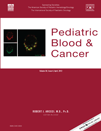Genetic and epigenetic similarities and differences between childhood and adult AML†‡§
Conflict of interest: Nothing to declare.
Author contributions: CJC: collection and analysis of data, writing of the first draft. HBO: statistical analysis of data. AA: optimization of the MS-MCA analysis and analysis of data. BL: responsibility of treatment at Rigshospitalet. EK: performed the diagnostic cytogenetic analyses. HH: conception and design of study, analysis of data, and responsibility of treatment at Skejby. PH: conception and design of study and funding of study. All authors reviewed the draft and made a final approval of the manuscript.
Caroline Juhl-Christensen and Hans Beier Ommen contributed equally in preparation of the manuscript.
Abstract
Background
The biology of acute myeloid leukemia (AML) is complex and includes both genetic and epigenetic aberrations. We addressed the combined consequences of promoter hypermethylation of p15, CDH1, ER, MDR1, and RARB2 and mutation of NPM1, CEBPA, FLT3, and WT1 in a Danish cohort of 70 pediatric and 383 adult AML patients.
Procedure
Mutation analysis was done by fragment analysis followed by sequencing or by sequencing alone. Methylation status was determined using methylation-sensitive melting curve analysis (MS-MCA) after initial bisulfite modification.
Results
Among pediatric AMLs, we found promoter hypermethylation in p15 (47%), CDH1 (64%), ER (62%), MDR1 (8%), and RARB2 (22%) and mutations in NPM1 (11%), CEBPA (3%), FLT3ITD (4%), FLT3D835 (7%), and WT1 (7%). Promoter hypermethylation was significantly more frequent in core binding factor leukemias (CBF) compared to AMLs with abnormalities involving 11q23 (P = 0.024). Compared to adult AML we found a significant difference in p15 (47% vs. 73%, P < 0.001) and RARB2 (22% vs. 42%, P = 0.003) methylation, as well as in NPM1 (11% vs. 31%, P = 0.001) and FLT3ITD (4% vs. 26%, P < 0.001) mutation.
Conclusion
Age-related differences exist in the frequency of mutations and it appears that promoter hypermethylation occurs in a non-random pattern in childhood AML accompanying specific genetic aberrations, and might represent an important step in the leukemogenic transformation. Pediatr Blood Cancer 2012; 58: 525–531. © 2011 Wiley Periodicals, Inc.




